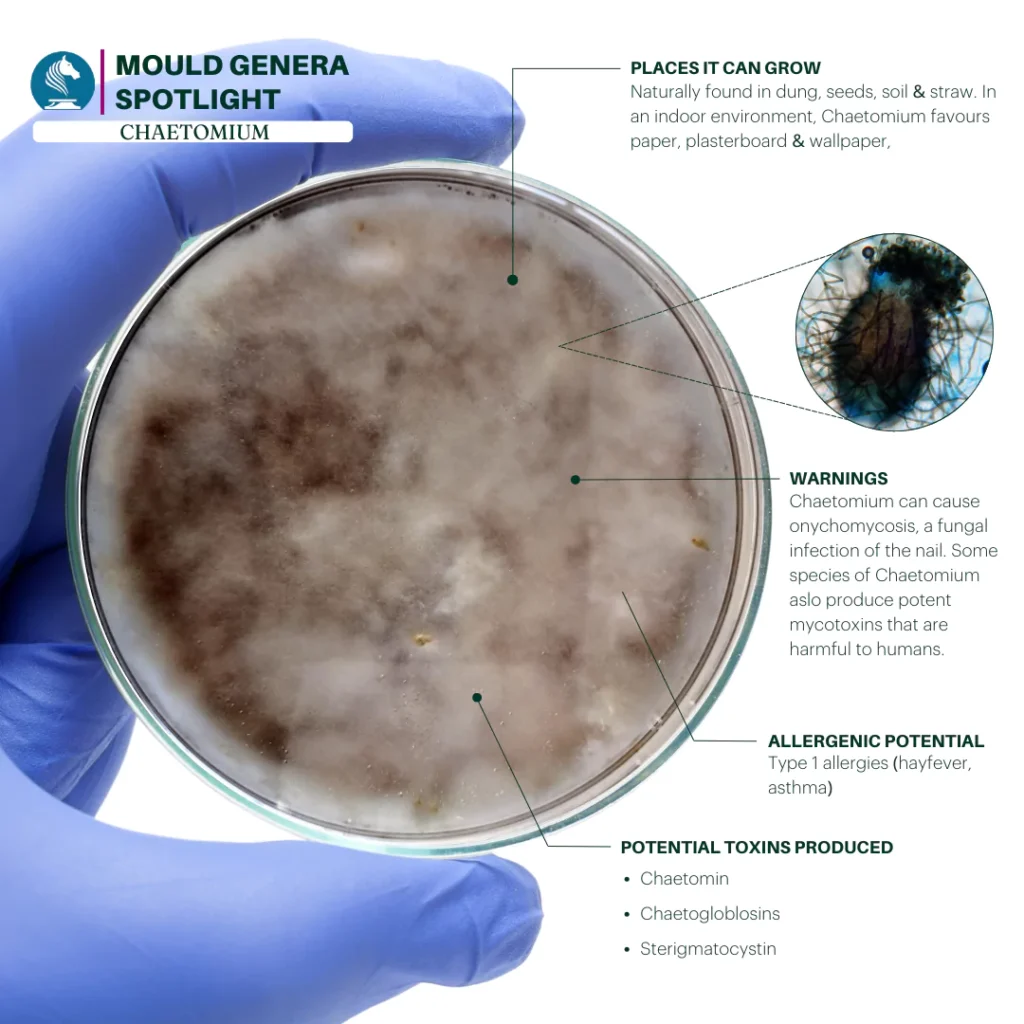
Mould Genera Spotlight - Chaetomium
Overview
Chaetomium is a mould known for its cotton-like texture and strong musty odour. It is often found in buildings with moisture issues and is a common indicator of water damage. One of the most well-known species is Chaetomium globosum.

Habitat and Growth Locations
Chaetomium thrives in environments that are cool and moist, making it a common sight in various places:
- Damp, water-damaged areas: Grows on cellulose-rich materials like drywall, wood, and paper after leaks or flooding.
- Basements and attics: Common in poorly ventilated spaces with high moisture levels.
- Soil and compost: Can be found in soil and decaying organic matter outdoors.
Health Risks and Allergenic Potential
While Chaetomium primarily affects plants, its spores can cause allergic reactions and respiratory issues in humans:
- Allergies: Can cause symptoms like sneezing, coughing, and sinus irritation.
- Infections: In rare cases, it can lead to skin or nail infections, particularly in immunocompromised individuals.
- Mycotoxins: Produces toxins such as sterigmatocystin, which is a potential carcinogen.
Toxins Produced
Chaetomium produces a few mycotoxins that affect humans:
- Sterigmatocystin: A potent mycotoxin linked to liver damage and considered a potential carcinogen.
- Chaetoglobosins: Cytotoxic compounds that can interfere with cell function and may contribute to respiratory problems.
Industrial Uses
Interestingly, Chaetomium is currently being researched and applied in:
- Biodegradation: Chaetomium species break down cellulose, aiding in the degradation of waste.
- Enzyme production: Used in the paper and textile industries for its powerful enzymes.




